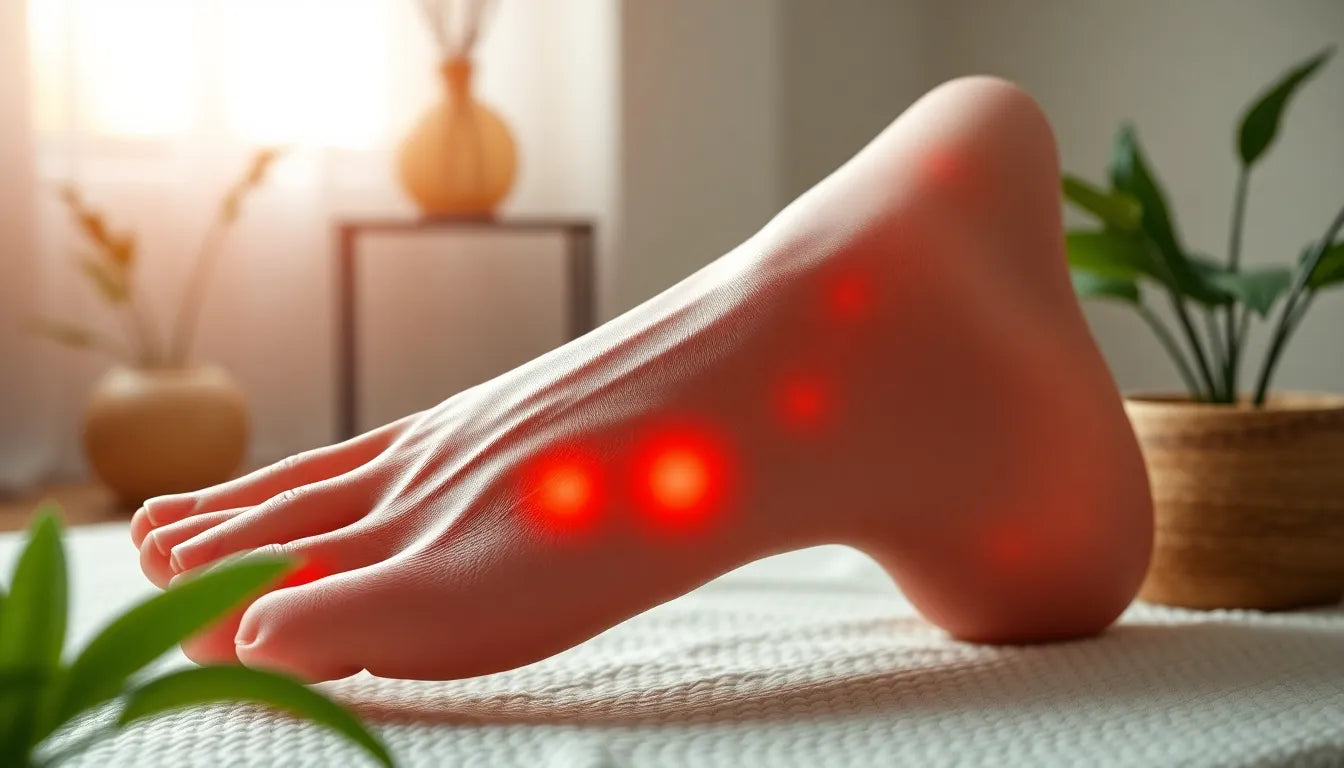Understanding sciatica pain is essential for anyone who has experienced the sharp, shooting discomfort that can radiate from the lower back down through the legs. Sciatica is a condition characterized by pain that follows the path of the sciatic nerve, the longest nerve in the body. This pain can be accompanied by tingling, numbness, or weakness, significantly impacting daily activities and overall quality of life. Given its prevalence, finding effective strategies for managing sciatica pain is crucial for many individuals.
Introduction to reflexology
Reflexology is an ancient practice rooted in the belief that specific areas of the body correspond to organs and systems. By applying pressure to these reflex points, reflexology aims to promote healing, reduce pain, and enhance overall well-being. This holistic approach is appealing for those seeking non-invasive, drug-free alternatives to traditional pain management methods. Reflexology for sciatica focuses on stimulating points that can alleviate the discomfort associated with this condition, offering a promising solution for relief.
The promise of reflexology for sciatica
As you explore the potential of reflexology for sciatica relief, this guide will provide a detailed look at specific reflexology points that can help mitigate the pain. By targeting these points, individuals may experience not only a reduction in sciatica symptoms but also holistic benefits such as improved circulation and decreased muscle tension. This approach not only addresses the symptoms but also supports overall health and well-being, making it a valuable addition to any pain management strategy.
The anatomy of the sciatic nerve
To understand how reflexology can aid in alleviating sciatica, it's crucial to grasp the anatomy of the sciatic nerve. The sciatic nerve is the largest and longest nerve in the human body, originating in the lower back and extending through the hips and buttocks, down each leg. This nerve is responsible for connecting the spinal cord with the muscles and skin of the legs and feet, making it integral to movement and sensation. When the sciatic nerve is compressed or irritated, it results in the painful condition known as sciatica.
Common causes of sciatica include herniated discs, which occur when the soft center of a spinal disc pushes through a crack in the tougher exterior casing, spinal stenosis, which is the narrowing of the spinal canal, and piriformis syndrome, where the piriformis muscle in the buttocks irritates the sciatic nerve. These conditions can lead to significant discomfort and require effective management strategies.
Reflexology points for sciatica relief
Reflexology offers a targeted approach to managing sciatica pain by focusing on specific pressure points that correspond to areas affected by the sciatic nerve. Here are three key reflexology points that can provide relief:
GB30 (Huantiao)
Located on the upper part of the buttocks, GB30 is a crucial point for addressing hip and leg pain associated with sciatica. To find this point, locate the midpoint between the sacrum and the greater trochanter of the femur. Applying firm pressure to GB30 can help release tension in the hips and promote better circulation, which may alleviate discomfort.
Technique: Use your thumb or a massage tool to apply steady pressure to the GB30 point for about 1-2 minutes. This can be done several times a day, especially when experiencing acute pain.
BL40 (Weizhong)
BL40 is located in the center of the back of the knee and is known for its effectiveness in easing lower back pain and improving circulation. Stimulating this point can help reduce tension in the lower back and legs, offering relief from sciatica symptoms.
Technique: Sit comfortably and use your thumb to press into the center of the back of your knee, holding the pressure for 1-2 minutes. Repeat this process a few times daily for optimal results.
BL23 (Shenshu)
Positioned on the lower back, BL23 is an essential point for strengthening the lower back and alleviating pain. This point is located approximately 1.5 inches lateral to the lower border of the second lumbar vertebra.
Technique: Use your fingers or a massage tool to apply gentle pressure to BL23, maintaining the pressure for 1-2 minutes. Performing this technique regularly can help fortify the lower back and reduce sciatica-related discomfort.
A holistic approach to sciatica management
Incorporating reflexology into a broader, holistic approach to managing sciatica can enhance its effectiveness. Combining reflexology with lifestyle changes such as regular exercise, stretching, and maintaining a healthy weight can help reduce the frequency and severity of sciatica episodes. Engaging in activities that strengthen the core and lower back muscles can also provide long-term benefits.
Reflexology not only targets the symptoms of sciatica but also supports overall health and well-being. By improving circulation, reducing muscle tension, and promoting relaxation, reflexology can be a valuable component of a comprehensive pain management plan. Embracing this holistic approach can empower individuals to take control of their sciatica symptoms and improve their quality of life.
Enhancing reflexology with complementary techniques
For those seeking to maximize the benefits of reflexology for sciatica relief, integrating complementary techniques and tools can be highly effective. Utilizing foam rollers or massage balls can enhance the pressure applied to reflexology points, offering deeper muscle relaxation and tension release. These tools can be particularly useful for individuals who find it challenging to apply consistent pressure with their hands alone.
Incorporating reflexology into your daily routine can also contribute to sustained relief from sciatica symptoms. Setting aside dedicated time each day to practice reflexology can help maintain its benefits and prevent the recurrence of pain. This routine can be easily integrated into existing self-care practices, such as yoga or meditation, creating a comprehensive approach to managing sciatica.
Comparing reflexology with other treatments
Reflexology offers a unique, non-invasive alternative to more traditional sciatica treatments like medication, physical therapy, or surgery. While medications can provide temporary relief, they often come with side effects that may not be suitable for long-term use. Physical therapy and surgery, while effective for some, can be costly and require significant time commitments.
In contrast, reflexology is a cost-effective, easy-to-learn practice that can be performed in the comfort of your home. It emphasizes safety and ease of use, making it accessible to a wide range of individuals. By focusing on the root causes of pain rather than just the symptoms, reflexology can offer a holistic approach to healing that aligns with natural wellness principles.
Utilizing visual aids for effective practice
To ensure accurate application of reflexology techniques, visual aids such as diagrams or instructional videos can be invaluable. These resources can help you locate reflexology points with precision, ensuring that pressure is applied effectively. Collaborating with healthcare professionals to create these visual aids can enhance their credibility and usefulness, providing clear guidance for beginners and experienced practitioners alike.
Visual tools not only improve the accuracy of reflexology practice but also enhance user engagement and understanding. By offering a step-by-step visual guide, individuals can gain confidence in their ability to perform reflexology correctly, leading to better outcomes in managing sciatica pain.
Frequently Asked Questions
What is sciatica, and what causes it?
Sciatica is a condition characterized by pain that radiates along the sciatic nerve pathway, typically affecting the lower back, hips, and legs. Common causes include herniated discs, spinal stenosis, and piriformis syndrome, all of which can compress or irritate the sciatic nerve.
How does reflexology help with sciatica pain?
Reflexology helps alleviate sciatica pain by applying pressure to specific points on the body that correspond to the sciatic nerve. This practice promotes healing, reduces muscle tension, and improves circulation, ultimately relieving pain and discomfort.
Are there any risks or side effects associated with reflexology for sciatica?
Reflexology is generally considered safe for most individuals. However, it's important to apply pressure gently and avoid areas of acute inflammation or injury. Consulting with a healthcare professional before beginning reflexology is advisable, especially for individuals with specific health conditions.
How often should I perform reflexology for sciatica relief?
For optimal results, reflexology can be performed daily. Consistent practice, even for a few minutes each day, can help maintain relief and prevent the recurrence of sciatica symptoms. Adjust the frequency based on your comfort and response to the treatment.
Can reflexology be combined with other treatments for sciatica?
Yes, reflexology can be effectively combined with other treatments such as physical therapy, exercise, and stretching. This integrative approach can enhance overall pain management, offering a comprehensive strategy for managing sciatica symptoms.



